Dispatches from Los Angeles
There is a target on Los Angeles's back and the Angelenos are responding loudly back
Welcome to my Substack #28. Soundtrack for this post: Grand National Tour
1. Dispatch from the plants: The jacarandas are in bloom here in Los Angeles. They dot the Silverlake hills with bursts of purple between the homes, shower cars with sticky blooms with impossible to remove residue, and cause traffic jams with influencers photo graphing spring ennui. To be a true Angeleno poet, you have to write about light purple flowers of the jacaranda, the first trees to bloom of the season, alongside the bright yellows of the mustard hills and the orange spring poppies (if we are lucky with rain.) To write a poem about the jacarandas is like being a South Asian in the diaspora who writes about juicy mangoes or fragrant jasmines. Like Chicano poets that write about prickly pear cactus or Nikkei poets writing about the cherry blossoms. It is longing nostalgia through blooms, hyphenated existence through land. You know this type of person - the kind of person that writes poetry about jacarandas that causes eyes to roll and smirks to form by non-Angelenos. It’s a stereotype, and almost too on the nose to be special. Everyone has a poem about the jacarandas. And yet still, every year, the flowers come back and we are again all in awe at how the blooms cut through the June glooms, and how the year is halfway gone.
2. After the jacarandas bloom the next in line are the night blooming scent of jasmine. Driving with the window down on almost summer nights in L.A. telling us through smell that summer is almost here.
3. Only non-Angelenos write about the palm trees.
4. Dispatch from the block: I wonder where the fruita man has gone, the one posted at the intersection of Benton and the 101 freeway. He would always have a box of mangoes ready to signal summer was coming. He had disappeared for the pandemic and his reappearance signaled that the pandemic had come to an end. In fact, all the fruita people have disappeared. The people with buckets of ugly bouquets of flowers at the freeway exists are gone. The man that sells coconuts with a straw on Alvarado in front of the post office is nowhere to be found. The tinkling of bells telling us the elote man with the cart of corn, tamales and bags of chicharron was walking by can no longer be heard. The car washes are closed. Construction sites on gentrifying properties in Los Feliz are lined up half done. And what is a summer concert in LA without the ladies cooking bacon wrapped hot dogs next to dudes hawking bootleg shirts. I don’t hear the sound of the ice cream truck this summer, just the sound of low hovering helicopters, and the occasional distant booms of LAPD sound cannons.
5. Let me tell you about the taco stand on my block next to my apartment. I used to be scared to drive home late at night, because I was afraid someone would follow my car into the garage – my building was regularly tagged with MS13 graffiti and the intersection had police activity constantly on the Citizen app. I live on the border of where MacArthur Park is really shady and gentrification. But then, this taco stand started appearing. They had a very professional set up, with grills and generators and tables and lots hanging lights and vinyl signs. They wore matching polo shirts. People started to lineup for the tacos. They were fine tacos, but nothing to lineup for. But they were the only taco stand around for a few blocks. It caused cars to back up and I had to weave through recklessly parked cars to get into my building. But I also knew that if I came home at 1am, the taco stand would still be there. It made me feel safer. The taco stand has been gone all week, and I wonder if it’s forever or if it’s just for now. And I wonder how much longer the MS13 tagging will stay on the wall, when the city was so quick to remove the one saying “fuck I.C.E.”
6. It took me 20 minutes to drive from Koreatown to Culver City on Saturday. I thought, ecstatically, that was a lot quicker than it should have been, I should do this drive more often. Then I realized why the streets were empty.
7. Dispatch from the streets: There are two types of Los Angeles – there is the type of Los Angeles that is on the surface that only the expats see (I hesitate to call them transplants because as soon as things get heavy with a pandemic or a baby is born, they run back to the middle country hometown that they came from, unplanting themselves, and shit talking that “L.A. phase” of their life.) Then there’s the other type of Los Angeles. The born and raised in L.A. The ones that learned in public high school that cholas would put razor blades in their teased up hair to defend themselves in catfights. The one that got their car washed at a fundraiser for a funeral of a classmate that got shot in a fight. The ones that learned to drive playing bumper cars with road-ragers in Font-tucky. The ones that learned to fight racists on the playground and learned to fight by the concreted Los Angeles river. The ones the learned how to codeswitch between a Valley Girl accent and Inland Empire BIPOC intonation, because that’s how you’d learn not be targeted. These are the Angelenos that know that the swap meet at the drive thru is where to go to find deals on lawn décor and and live chickens and tools that maybe might have been stolen but we don’t talk about that part. Expats call these Southern Californians rude but locals know that the resting bitch face we were raised with is a survival tool – it’s not personal – we just can’t show weakness. They think Los Angeles is Clueless and La La Land, but really Los Angeles is Speed, Drive, Rebel Without a Cause, and Fast and Furious. If you didn’t know, L.A. goes HARD.
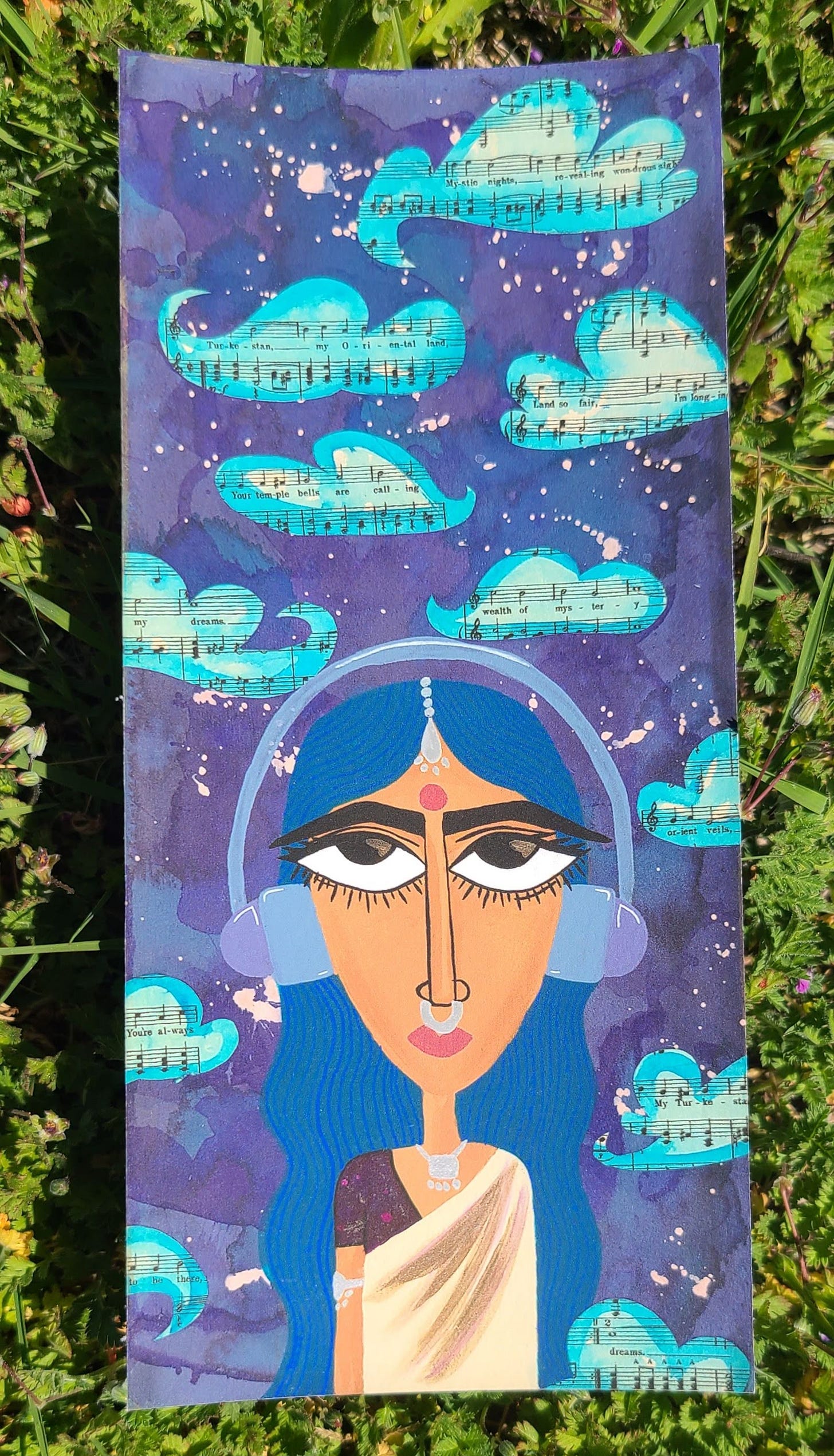
8. And these Angelenos, this underlayer of Angelenos, we know how to fight for what we believe is right. We know how to protest. We know how to organize. We know how to strike. It’s a city of dreamers with nothing but unwaivering belief pumping through our veins. We are practiced and know how to take to the streets. I am proud of how Los Angeles protested but I’m even more proud of how Los Angeles protected our people. I am proud of how we will continue to protect ourselves.
9. Dispatch from protest: We know how to protest. We protest close to the kids with face masks, and helmets, and bottles of milk in case of tear gas. We know which streets have allies to hide in and we know how to spot undercover LAPD by their shoes. We know which numbers to have sharpied on our arms, which people to let know on the outside we are still alive and which of our friends is our lawyer. In the protest we are brave, because there are so many of us and we’ve been here before.
10. I saw someone protesting holding a Bangladesh flag and an American flag. It looked like a Brown kid, and I didn’t want to be the Auntie to go up to him and scare him – so I took sneaky photo instead. I was so used to being the only one. That afternoon when I swung by Deshi for mishthi, the storeowner asked if I had been to the protest, and I immediately pulled up to image of the Bangladeshi flag at the protest like a proud Auntie.
11. At the end of the No Kings protest, I waited for my Lyft ride under the shade of a tree in Chinatown. A large white van was parked in front of us – we looked inside the darkened window and there were people inside. There was wires and satellites on top, and cameras sneakily placed around. Were we next to an unmarked vehicle monitoring the protests? Was there really no escaping this surveillance?
12. Dispatch from the South Asian Angeles past: This past week, I was particularly moved by @Historyin3’s reel about all the uprisings where people took back power in Los Angeles. From Tongva woman Toypurina’s planned rebellion against the Mission San Gabriel in 1785 to the Chinese Massacre of the lynching of 18 men and boys in 1871, he goes on to list of a series of historical moments of Angelenos rising up over the years. It made me think of the shadows of South Asian American history that we walk in today in Los Angeles. The West Coast Ghadar Party had chapters across Southern California from Los Angeles to the Imperial Valley, and through these chapters they would organize how to overthrow the colonizers in South Asia. Here in Los Angeles in 1915, Ghadarites secretly stocked the SS Maverick with arms and propaganda materials at the San Pedro Port before sending it to India in a failed attempt to overthrow the British (in the Hindu German Conspiracy.) Los Angeles was the home of one of the first South Asian women in America – Kala Bagai, who was known as Mother India, welcoming all kinds of South Asians to her home in Koreatown when they first arrived through her organization American Wives of India. It is because of the organizing in Los Angeles that South Asians now have the right to vote - at the corner of Olympic and the 110 freeway, Dalip Singh Saud founded the India Association of America which coordinated a four year campaign that led to the passing of the Luce-Cellar Act. Dalip Singh Saud would become the first South Asian in U.S. Congress. During the 1992 Los Angeles riots, several Indian businesses along were burned down. We know that South Asian laborers worked on the railway, the farms, the markets, the garment industry, the ships – and that even if their stories aren’t recorded that they likely worked alongside every single labor movement in California.
13. Anyways. I often wonder if I immerse myself into the radical history of South Asians in Los Angeles because it’s easier to bury myself in the archives of past instead of confronting the present.
14. Dispatch from the Grand National Tour: As I was driving outside of SoFi stadium to the Kendrick/SZA show, a car pulled out in front of me slightly, so, like any K-town driver would do, I went around it because I had the right of way. The woman pulled up next to me and yelled at me about waiting my turn. I ignored her for a bit then responded that I had the right of way, there was no turn, technically speaking. She said, “Don’t you know where you are? You're in the hood now, bitch!” and she spit on my 2012 Yaris. First of all, I didn’t know people actually talked like they were in bad Tyler Perry movies. Second of all, I was driving by Ktown rules, which means very aggressively, because that’s the rules of the street where I’m at. Third of all, “You’re in the hood now, bitch!” is my summer refrain. I didn’t know you could just spit on people if you wanted to. Anyways, we stood outside the stadium’s box office and bought last minute tickets and got to bounce to L.A.’s anthem “Not Like Us” live with all the rest of Los Angeles.
15. So what do you do? Last night in art class, I assembled a chromed our megaphone with hoop earrings, careful to place all the hearts in row. To me, this is LA – it’s about being loud, protesting, flashy, and pretty to the point of gaudy. It’s hoop earrings. It’s chrome everything. It’s megaphones in everyhand. Our love isn’t obvious, it’s embedded and embossed – you will find it in the details and if you look closely. It’s my ode to L.A.
16. Here in L.A., the streets are so empty and the thugs are everywhere. And now we are entering in a megalomaniac’s war. But we have been here before and we know what needs to be done.




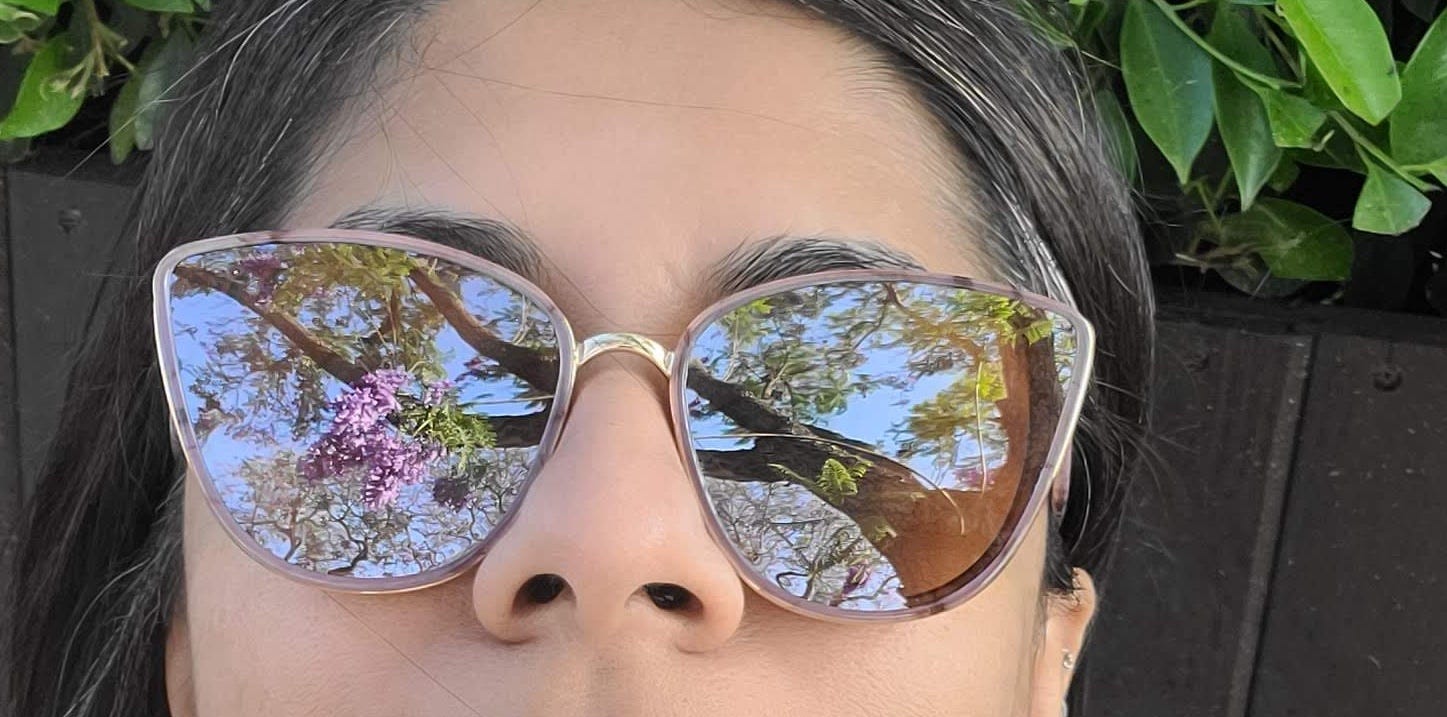

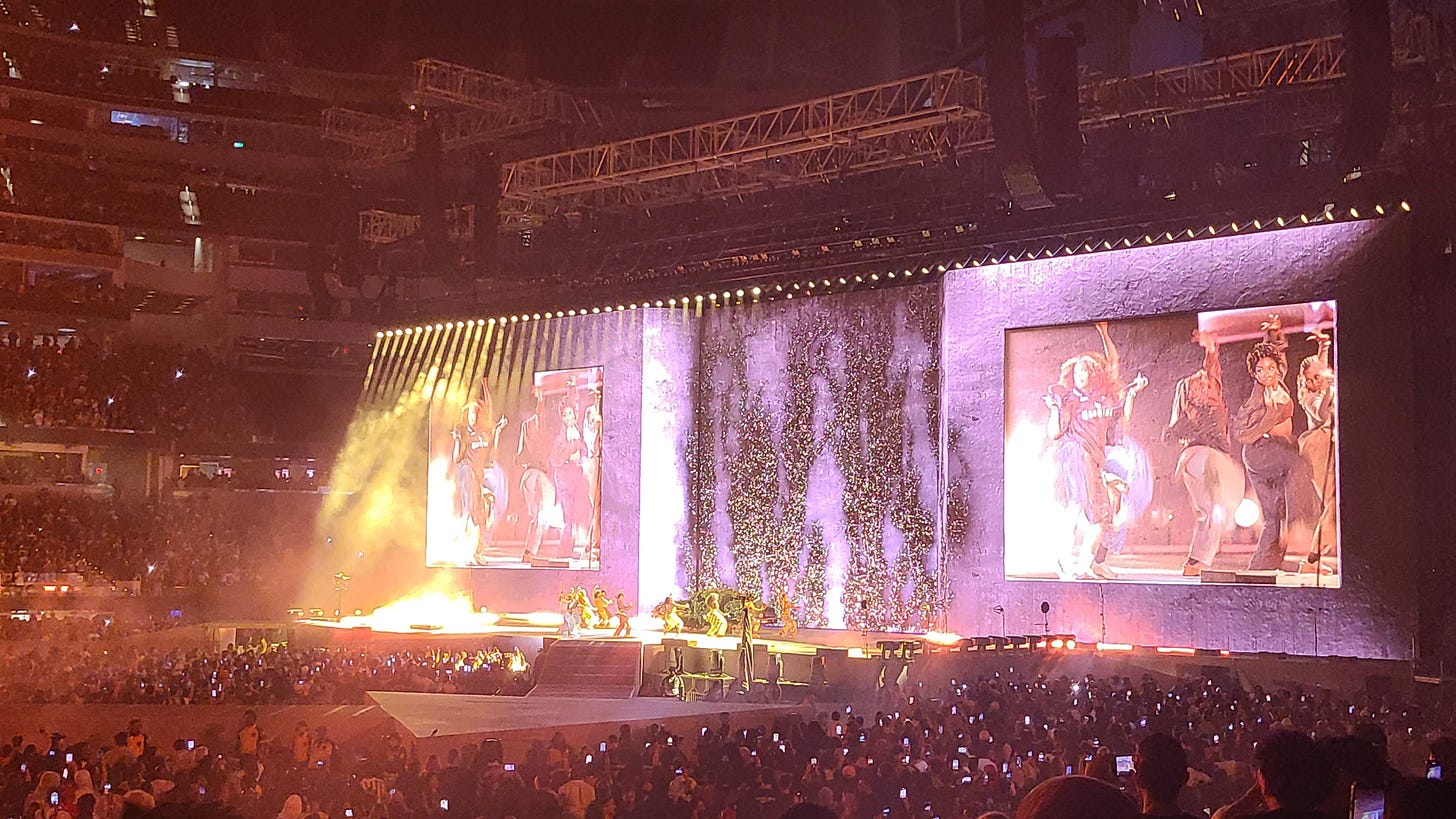
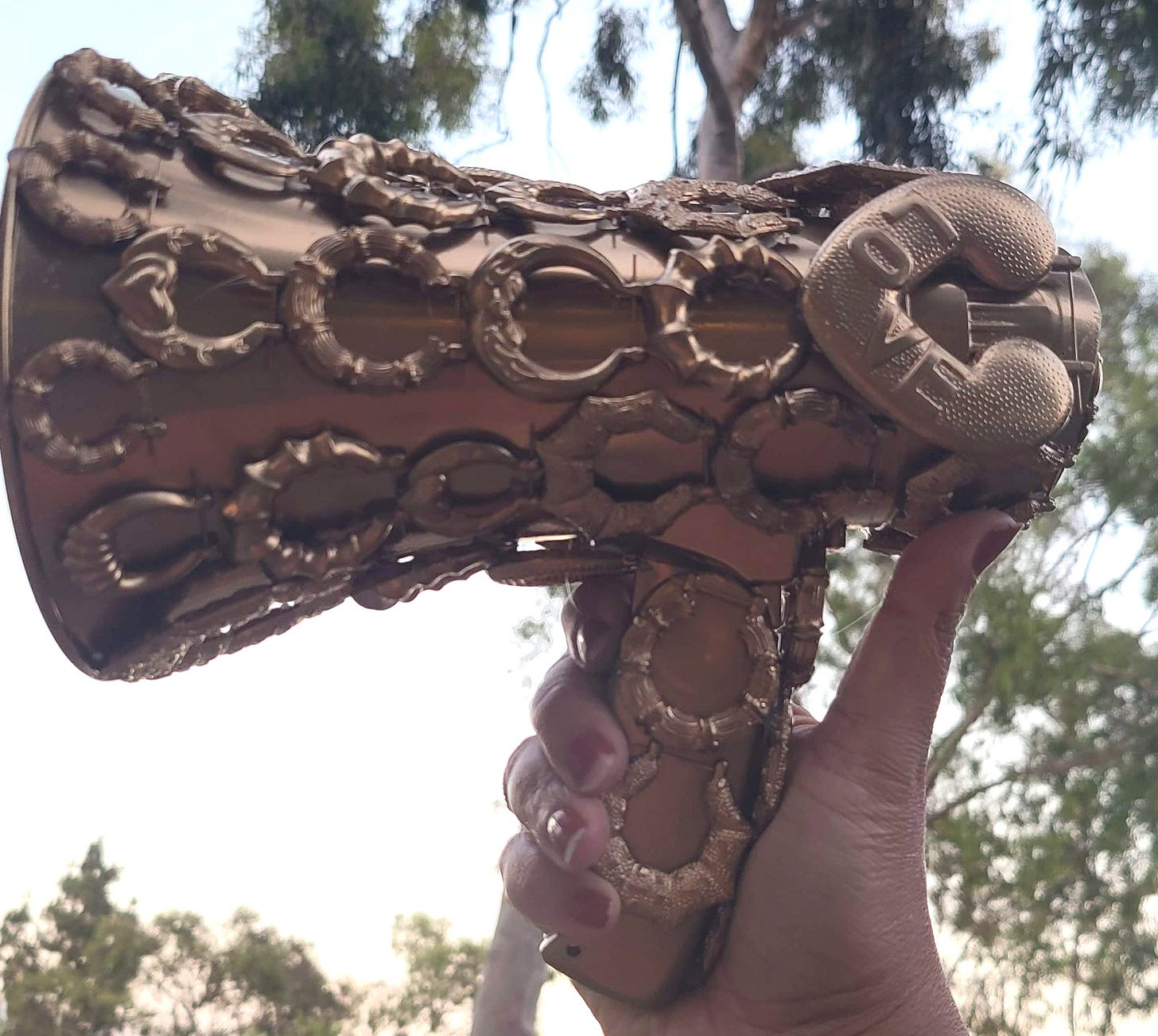


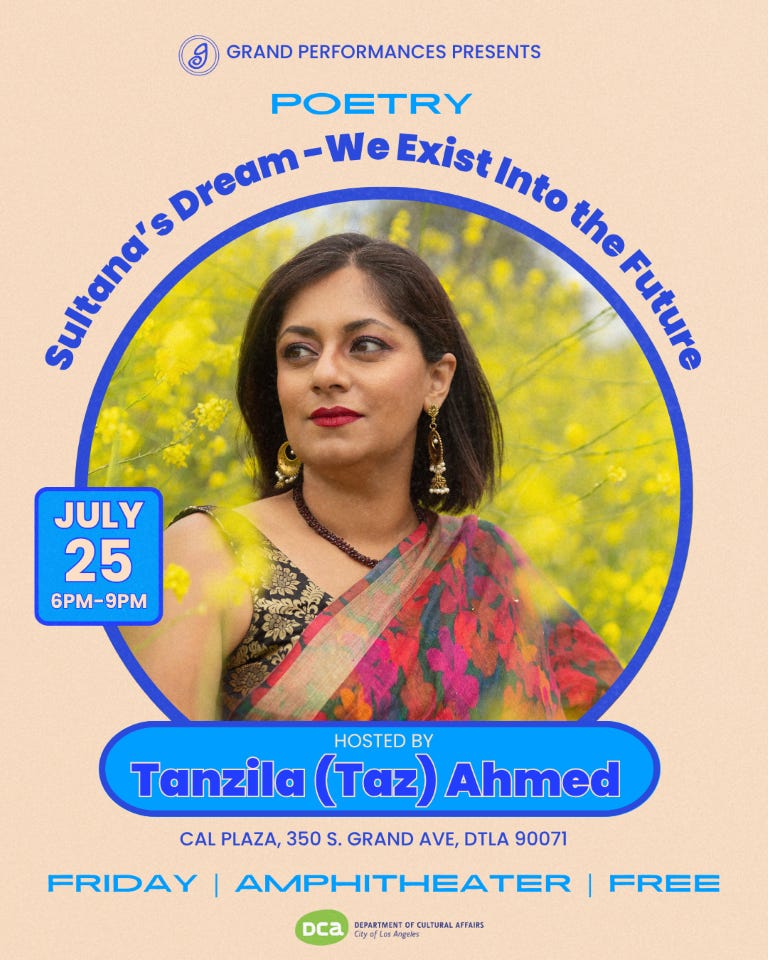
I wrote a song in solidarity to what I have seen on the news, and heard from my friends in Los Angeles. Stand strong! We will stand with the Angels.
https://theramm.substack.com/p/angels-of-the-city